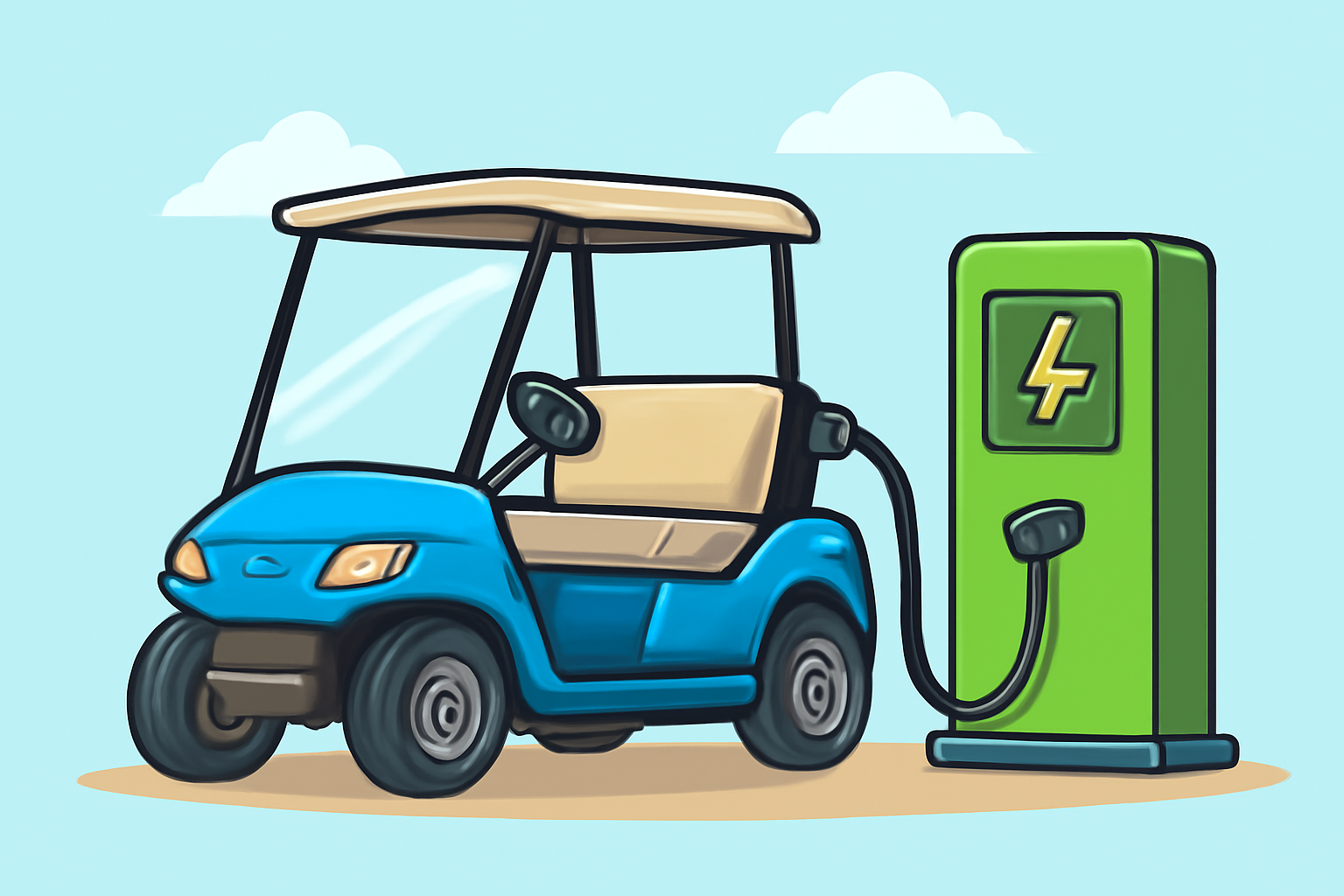-
Shopping Tools
-
Care & Maintenance
-
About
-
Dealer Login

Golf cart chargers can work in the cold, but batteries set the rules: avoid charging when packs are frozen; warm first and use slow, smart charging.
Chargers themselves usually operate across broad temperature ranges; it’s the battery chemistry that becomes the bottleneck. In freezing conditions, lead-acid electrolyte thickens and can freeze when the state of charge is low, and lithium cells risk lithium plating if charged too cold. The safest strategy is to bring the pack above freezing before charging, or charge in a temperature-controlled space. If you’re upgrading or replacing your golf cart batteries, consider solutions designed for winter use.
Electrolyte freeze point depends on state of charge: a fully charged pack resists freezing far better than a discharged one. Deeply discharged batteries can freeze around the freezing point of water, potentially cracking cases or plates.
Charging a frozen or partially frozen lead-acid battery can buckle plates, shed active material, and cause permanent capacity loss. Even above freezing, cold slows chemical reactions, so charge acceptance drops and voltage behavior changes.
Many lithium packs include a Battery Management System (BMS) that blocks charging below a threshold (often around 32°F/0°C). That’s a safeguard against lithium plating, which permanently reduces capacity and increases internal resistance.
Even when allowed, cold charging should be gentle. Manufacturers typically recommend lower current until cell temps rise. Some packs include self-heating functions that warm cells before enabling normal charge rates.
Operation: Most carts will still run below 32°F (0°C), but range and performance drop. Around 14°F (-10°C) and below, both chemistries suffer pronounced voltage sag and reduced power delivery. Traction, braking, and plastics also become less forgiving—drive conservatively.
Charging: Treat 32°F (0°C) as a practical lower limit for lithium unless the pack is warmed or has self-heating. Lead-acid can be charged below freezing only if the electrolyte is not frozen and the charger temperature-compensates—still, warming above freezing is strongly recommended.
Yes—because of the battery, not the charger. Lithium BMS systems may refuse to accept charge until cells are warm. Lead-acid batteries accept charge sluggishly, need higher voltages (with compensation), and can be damaged if ice crystals are present. In both cases, you’ll see slower charging, delayed starts to charging, and sometimes a “no-charge” condition until the pack warms above freezing.
Chargers do function in the cold, but battery chemistry dictates what’s safe and effective. Never charge a frozen pack. Warm batteries above freezing, use temperature-aware charging, and expect longer sessions with reduced current in winter.
